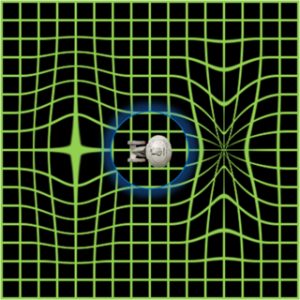Ok maybe I’m being just a little bit facetious with this post. However, last week scientists at Lund University in Sweden announced that they have confirmed the existence of Element 115 currently known as Ununpentium. This is very cool news in the world of science. If my memory serves me, scientists may have made this discovery a number of years ago, but I guess now it’s “official”. Some kind of committee of physicists and chemists will now review the finding before adding it to the periodic table of elements.
Beyond the sheer coolness of the discovery, the announcement stood out to me for another reason. If any of you have ever watched any of the alien shows on the discovery channel or “science” channel, you may recall some guy named Bob Lazar. This guy claims to have worked at Area 51 (or more specifically some above top secret site near Area 51) reverse engineering UFOs. Now I should probably state that I don’t actually believe Bob Lazar, but his story does make for great science fiction nonetheless.
Beyond the sheer coolness of the discovery, the announcement stood out to me for another reason. If any of you have ever watched any of the alien shows on the discovery channel or “science” channel, you may recall some guy named Bob Lazar. This guy claims to have worked at Area 51 (or more specifically some above top secret site near Area 51) reverse engineering UFOs. Now I should probably state that I don’t actually believe Bob Lazar, but his story does make for great science fiction nonetheless.
According to Lazar, the UFOs were powered by Element 115. Allegedly, a particular isotope of Element 115 under proton bombardment would get bumped up to Element 116. This element would then rapidly decay, releasing antiprotons in the process. The antiprotons were then used for matter-antimatter annihilation inside a reactor.
He also made an off-the-wall claim that the strong nuclear force that holds protons inside the nucleus (despite them wanting to repel each other), is really just gravity. Needless to say, there aren’t any physicists that would endorse such a claim. He also claimed that gravity waves are just like sound waves in that they can be amplified. The way the UFO traveled through the universe was by using the enormous energy produced by the antimatter reactor to amplify the gravity wave from the nucleus of an atom. Presumably, this would operate like some sort of warp drive.
All told I’d have to give Lazar an A for effort. It’s a cool story that would have made a great science fiction novel. Unfortunately, given the disconnect from reality, it’s unlikely we’ll be generating antiprotons from Element 115 anytime soon.
With that said I want to turn our attention to an idea for creating an anti-gravity drive that, at least to me, sounds like it could plausibly work. I’m pulling this idea from a youtube video that I stumbled across while browsing the internet one night. I’m not going to link to it because, alas, the kid in the video ventures off into conspiracy theory land claiming that the government already has this technology etc, but it’s still intriguing. Let me state upfront that I believe I got either B’s or C’s in my undergraduate physics classes, so if someone who actually knows something about physics is reading this and it’s totally wrong please let me know. It seems correct to me, however.
So to begin you first need understand a couple bizarre phenomena that are the byproducts of quantum mechanics. The first is superconductivity. This is a property of certain metals that when cooled below a critical temperature conduct electricity with zero resistance. How is that possible? Don’t ask me, I don’t understand it. But just watch this video to get a glimpse of this phenomenon in action:
Now if that video didn’t blow your mind consider this — a levitating superconductor can lift 70,000 times its own weight. That 3 inch disk in the video is only a few microns thick. If it’s thickness was increased to only a couple millimeters, it could levitate a small car. Now while this is certainly an incredible phenomenon and very well may have practical application in the future, it’s not going to allow for interstellar travel. So let us continue.
Like superconductivity there is another bizarre state of matter called superfluidity which is where fluids flow with zero viscosity. The following is a picture of a superfluid flowing up the side of a glass. Again, just don’t ask how it is possible.
Now given that a superfluid flows with zero viscosity, that means if we were to put it into some kind of centrifuge and spin it, it would not slow down due to friction. If it never slows down due to friction, in theory, that implies we should be able to accelerate a superfluid to the speed of light.
The problem is that when you put a stick in a superfluid and attempt to stir it, it doesn’t actually stir. Instead the individual atoms just spin on their axes. So we need to find some way of spinning this superfluid.
Now there’s another type of fluid called a ferrofluid which is essentially a magnetic fluid:
If it were possible to either discover or possibly create in a cryogenics lab a superferrofluid, that is a magnetic superfluid, then you should be able to spin it using electromagnetism. You would simply wrap the centrifuge in a superconductor basically turning it into an electric motor and accelerate the superfluid to some high percentage of the speed of light. Now the big question is what happens when the fluid in the centrifuge reaches relativistic speeds? There may be some reason to believe that it would warp spacetime around the centrifuge.
Hello warp drive! Oh, and you’re welcome.




No comments:
Post a Comment